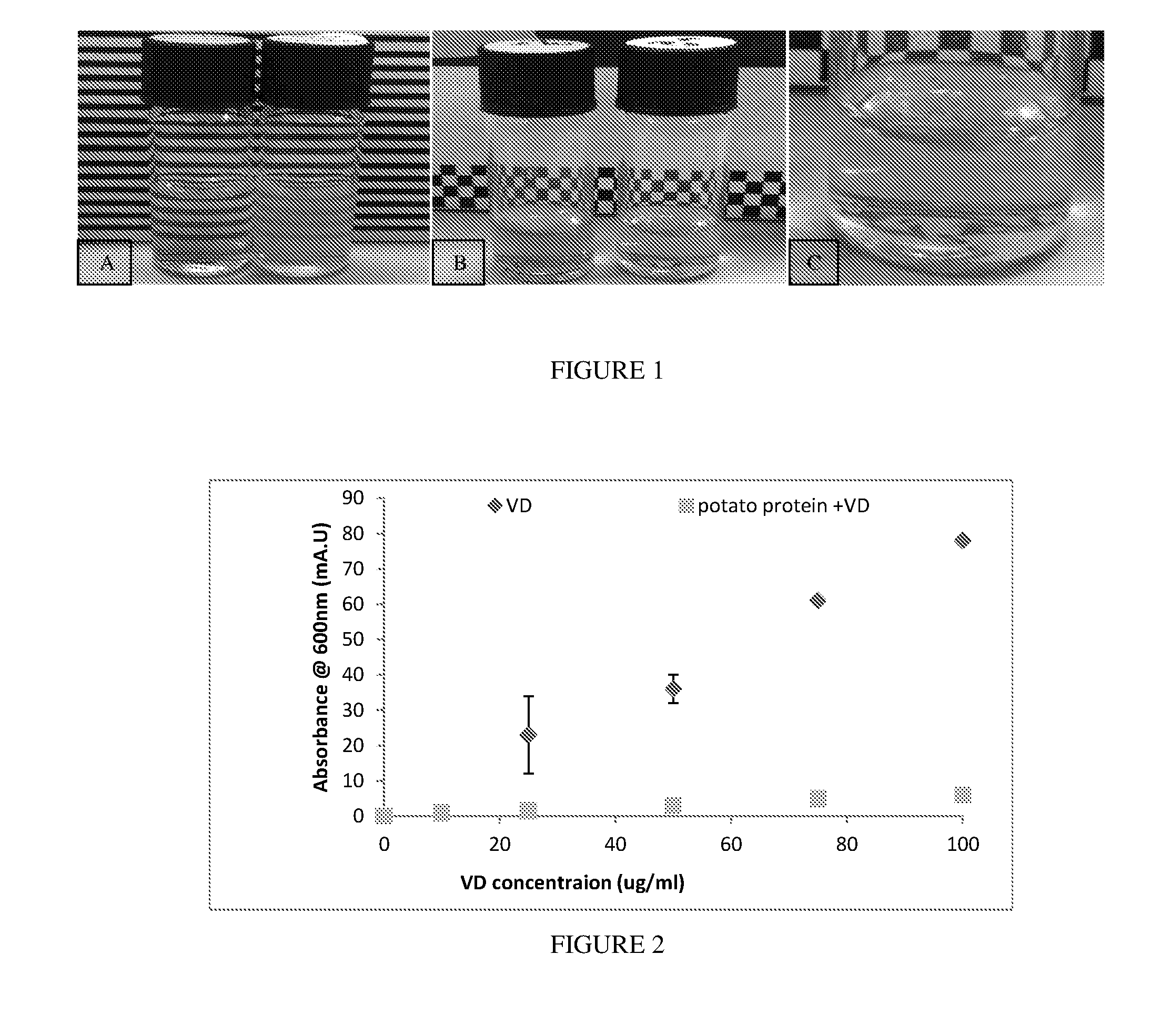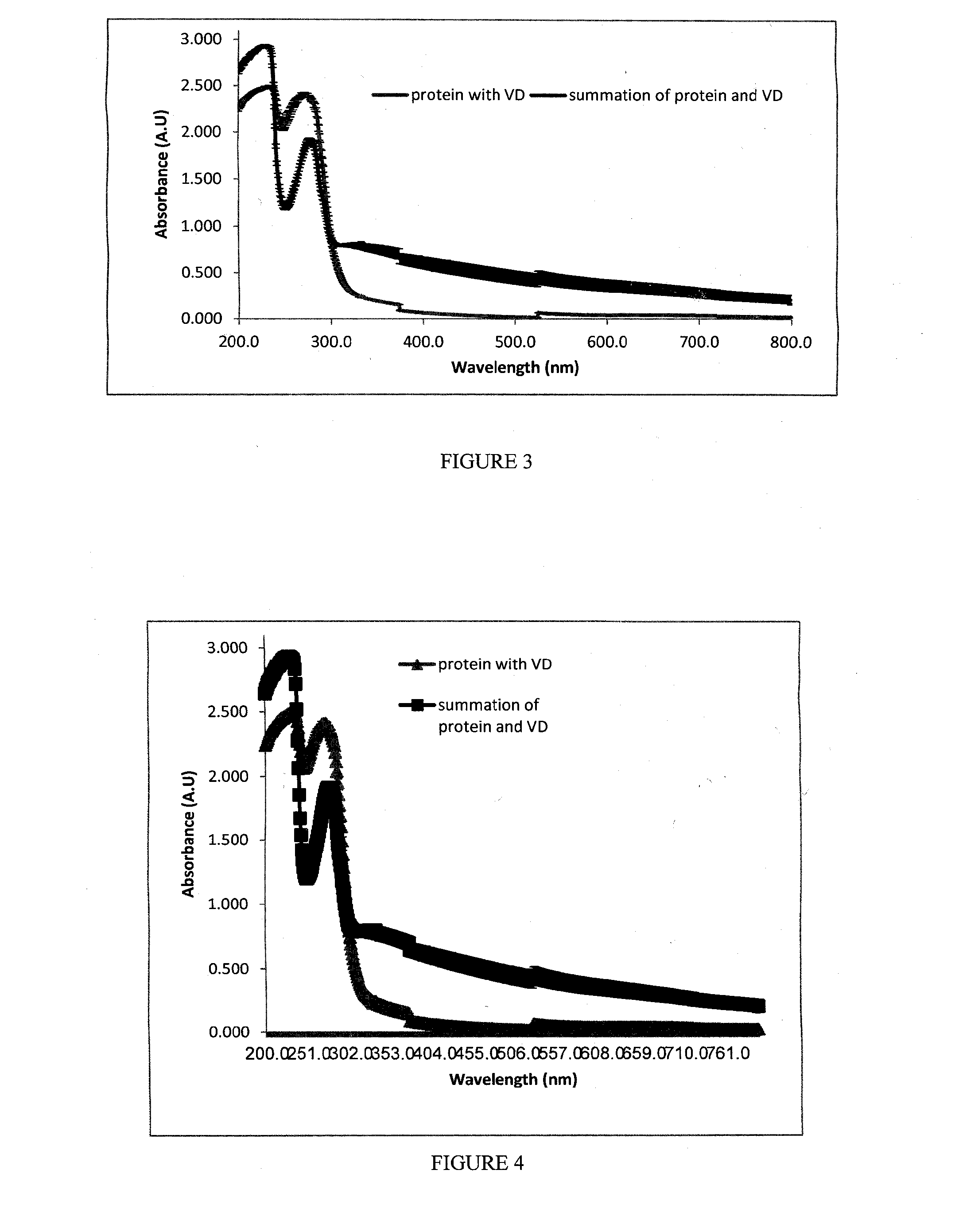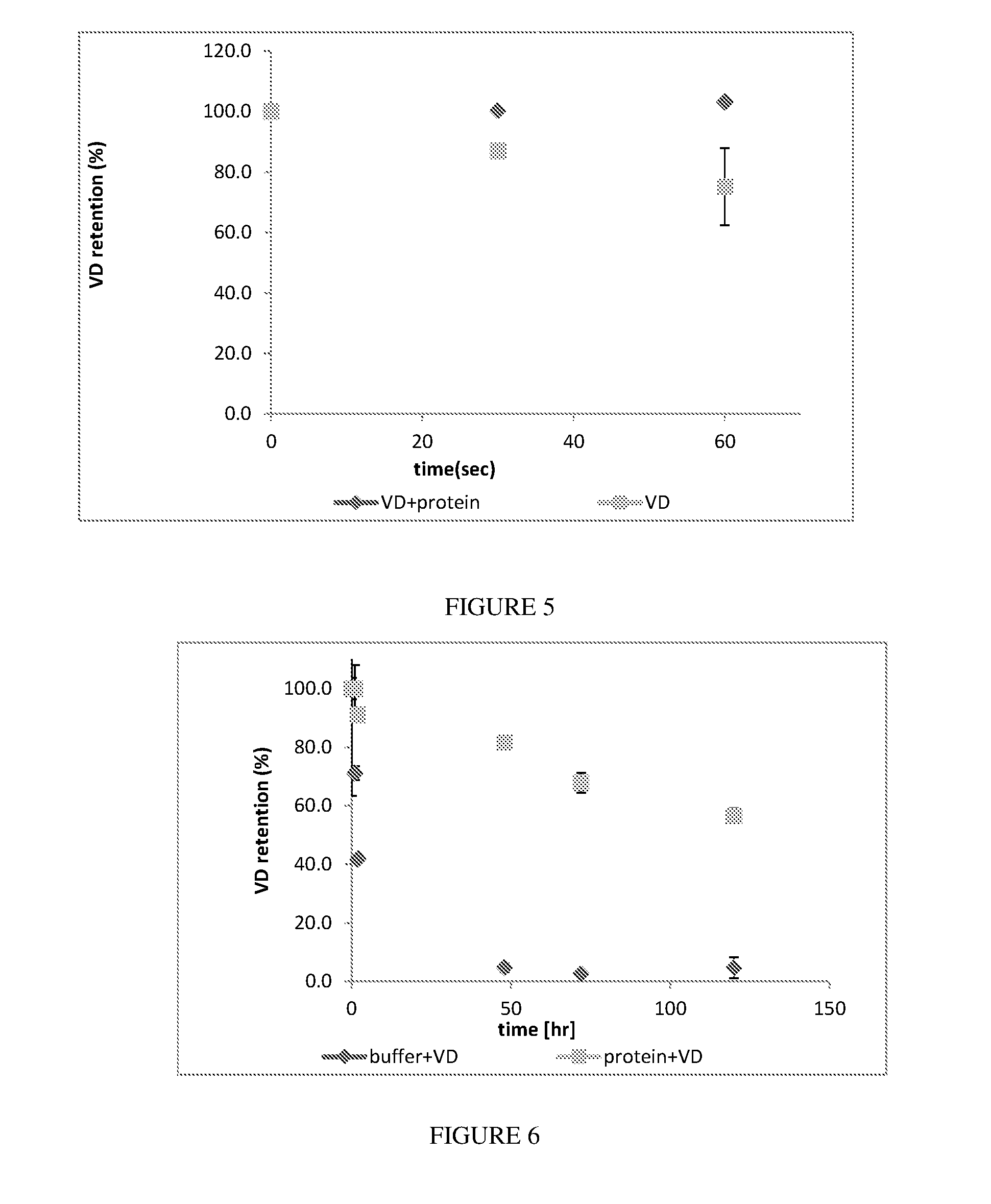Potato protein nanoparticles
a technology of protein nanoparticles and protein nanoparticles, which is applied in the direction of organic active ingredients, capsule delivery, dispersed delivery, etc., can solve the problems of harmful or beneficial, enriching foods with nutraceuticals may pose great challenges, and still poses tough challenges
- Summary
- Abstract
- Description
- Claims
- Application Information
AI Technical Summary
Benefits of technology
Problems solved by technology
Method used
Image
Examples
example 1
Potato Protein Nanoencapsulated Products
[0092]The present example provides scientific evidences pertinent to the freezing, drying, dry-state stability, and reconstitutability of the nanoencapsulated compositions of the invention including real beverage products.
[0093]This example provides evidence showing that the current technology enables the enrichment of soft drinks with health promoting nutraceuticals. Those drinks treated according to the present technology provided, long desired, preventive medicine benefits. Needless to say, the encapsulation of bioactives by this technology should be applied in many other food and drink products, where solubilization and protection of sparingly soluble bioactive compounds are desired.
[0094]First, the effect of potato protein on solubilization and transparency of vitamin D (VD) was assessed. Two aqueous buffer solutions (25 mM phosphate buffer, pH 2.5) containing the same concentration of VD (0.1 mg / ml) were used. Only one vial (left vial of...
example 2
Stability of Potato Protein (PP) Nanoencapsulated Products
Determination of VD3 Degradation Under Typical Industrial Pasteurization and Hot-Bottling Conditions
[0105]VD3 in phosphate buffer, and PP-VD3 nanoparticles were prepared at 1 mg / ml potato protein (PP) and 100 μg / ml VD3 at pH 2.5.
[0106]Samples (without a cap) were heated in a water bath for 1 min at 88° C. Following heat treatment, samples were capped and maintained at room temperature for 30 minutes until their temperature decreased to 30-35° C. Controls of VD3, PP and PP-VD3 nanoparticles, at pH 2.5, were extracted immediately without any heat treatment. The other samples were extracted at room temp after the above heat treatment.
VD3 Extraction
[0107]VD3 was extracted and quantified using a protocol based on Haham, et al. (Haham, M., et al., Stability and bioavailability of vitamin D nanoencapsulated in casein micelles. Food & Function, 2012). The protocol, used on both aqueous solutions (with and without PP), was as follows:...
PUM
| Property | Measurement | Unit |
|---|---|---|
| solubility | aaaaa | aaaaa |
| diameter | aaaaa | aaaaa |
| temperature | aaaaa | aaaaa |
Abstract
Description
Claims
Application Information
 Login to View More
Login to View More - R&D
- Intellectual Property
- Life Sciences
- Materials
- Tech Scout
- Unparalleled Data Quality
- Higher Quality Content
- 60% Fewer Hallucinations
Browse by: Latest US Patents, China's latest patents, Technical Efficacy Thesaurus, Application Domain, Technology Topic, Popular Technical Reports.
© 2025 PatSnap. All rights reserved.Legal|Privacy policy|Modern Slavery Act Transparency Statement|Sitemap|About US| Contact US: help@patsnap.com



